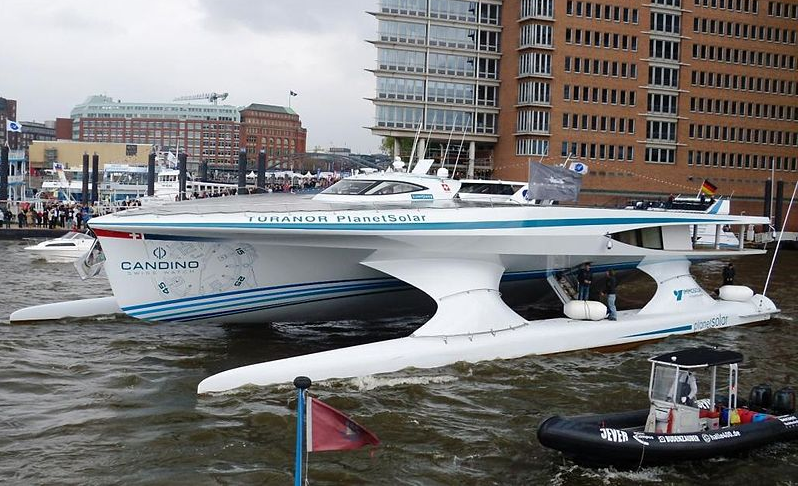
Experimental solar vehicles often give us insight on the possibilities of concepts and technologies that are “instilled” in them. Solar Impulse for example, let’s us remember that even our current solar energy technology is already sufficient enough to set transcontinental travel and distance records.
This time though, we are looking at a different solar vehicle on the horizon, and we mean on the oceanic horizon. Meet Tûranor PlanetSolar, the first solar boat ever to have circumnavigated the entire globe.
Tûranor PlanetSolar was designed and engineered by LOMOcean Design and Knierim Yachtbau. The solar boat’s birthplace was in Kiel, Germany, where it was built under the similarly named PlanetSolar project. This 31-meter (101.7 feet) long 15-meter (49.2 feet) wide vessel is purely powered by solar energy, and is the very first of its kind to be fully completed for its prime mission and objective. Its solar array has a power rating of 93 kW, but like all other experimental solar vehicles, it has been designed for passive efficiency, with its special shape allowing it to reach up to 14 knots (16mph or 25.7km/h). When docked, the ship could accommodate 40 people, and when on a journey it can support 13 members.
Tûranor PlanetSolar’s first journey started last September 27, 2010, when it departed from Monaco on a long-distance cruise mission that would help increase public awareness of clean and green renewable energy technologies. It stopped over several locations around the world afterwards, with its most notable of its stopover being its visit to Cancun, Mexico, where the 2010 United Nations Climate Change Conference was at that time currently being held. It then continued to travel around the world for almost two years non-stop, until it finally returned to Monaco last May 4, 2012.
Today, after yet again breaking its previously made cruise record last May 18, 2013, the Tûranor PlanetSolar is now being prepared for another journey, one that is not focused on speed, but is instead focused on study. Starting June 7, 2013, a team of researchers from the University of Geneva would commence the solar boat’s scientific voyage into the Gulf Stream, the primary objective being to collect environmental data along the ocean current. The journey would start from Miami, Florida, trailing the current to eventually arrive in Bergen, Norway. From here, it would start its new life as a research vessel, a bit far from the luxury boat that it is called to become at the last part of its original project.
A notable thing to point out when we think about its potential as a scientific research vessel is that it is a non-polluting vehicle. This means that with the exception of its very presence, every place it would visit around the world would not be tainted by any form of emission or fume from any dirty fuel energy source. And we know what this means: research specimens can stay largely unharmed. This benefits both the natural habitat and the research in two ways, because first, it is not a direct threat to any living organism, and second, perfectly preserving the natural environment can lead to much more data yield for scientific study.





Leave a Comment